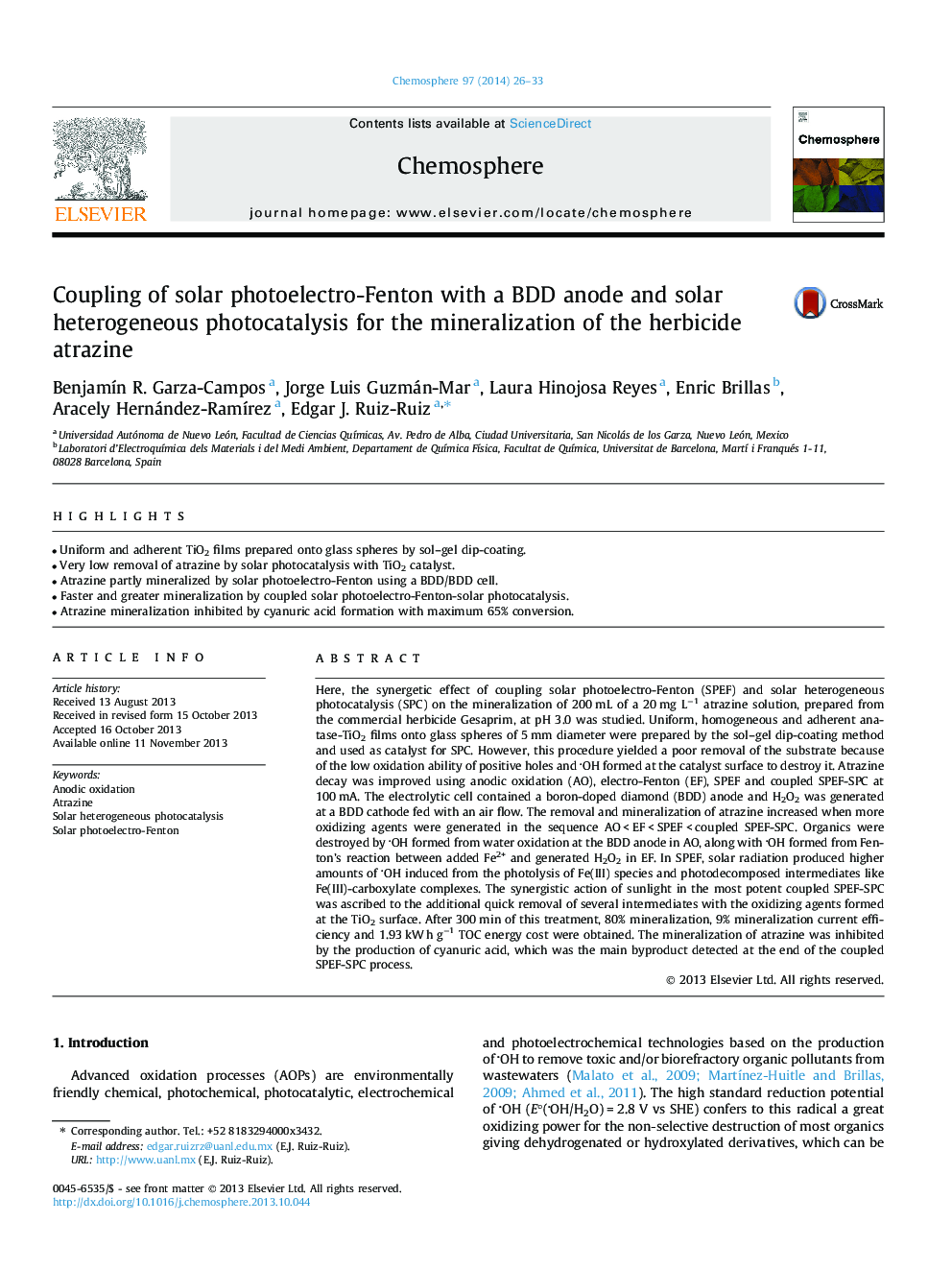| کد مقاله | کد نشریه | سال انتشار | مقاله انگلیسی | نسخه تمام متن |
|---|---|---|---|---|
| 4408981 | 1618874 | 2014 | 8 صفحه PDF | دانلود رایگان |

• Uniform and adherent TiO2 films prepared onto glass spheres by sol–gel dip-coating.
• Very low removal of atrazine by solar photocatalysis with TiO2 catalyst.
• Atrazine partly mineralized by solar photoelectro-Fenton using a BDD/BDD cell.
• Faster and greater mineralization by coupled solar photoelectro-Fenton-solar photocatalysis.
• Atrazine mineralization inhibited by cyanuric acid formation with maximum 65% conversion.
Here, the synergetic effect of coupling solar photoelectro-Fenton (SPEF) and solar heterogeneous photocatalysis (SPC) on the mineralization of 200 mL of a 20 mg L−1 atrazine solution, prepared from the commercial herbicide Gesaprim, at pH 3.0 was studied. Uniform, homogeneous and adherent anatase-TiO2 films onto glass spheres of 5 mm diameter were prepared by the sol–gel dip-coating method and used as catalyst for SPC. However, this procedure yielded a poor removal of the substrate because of the low oxidation ability of positive holes and OH formed at the catalyst surface to destroy it. Atrazine decay was improved using anodic oxidation (AO), electro-Fenton (EF), SPEF and coupled SPEF-SPC at 100 mA. The electrolytic cell contained a boron-doped diamond (BDD) anode and H2O2 was generated at a BDD cathode fed with an air flow. The removal and mineralization of atrazine increased when more oxidizing agents were generated in the sequence AO < EF < SPEF < coupled SPEF-SPC. Organics were destroyed by OH formed from water oxidation at the BDD anode in AO, along with OH formed from Fenton’s reaction between added Fe2+ and generated H2O2 in EF. In SPEF, solar radiation produced higher amounts of OH induced from the photolysis of Fe(III) species and photodecomposed intermediates like Fe(III)-carboxylate complexes. The synergistic action of sunlight in the most potent coupled SPEF-SPC was ascribed to the additional quick removal of several intermediates with the oxidizing agents formed at the TiO2 surface. After 300 min of this treatment, 80% mineralization, 9% mineralization current efficiency and 1.93 kW h g−1 TOC energy cost were obtained. The mineralization of atrazine was inhibited by the production of cyanuric acid, which was the main byproduct detected at the end of the coupled SPEF-SPC process.
Journal: Chemosphere - Volume 97, February 2014, Pages 26–33